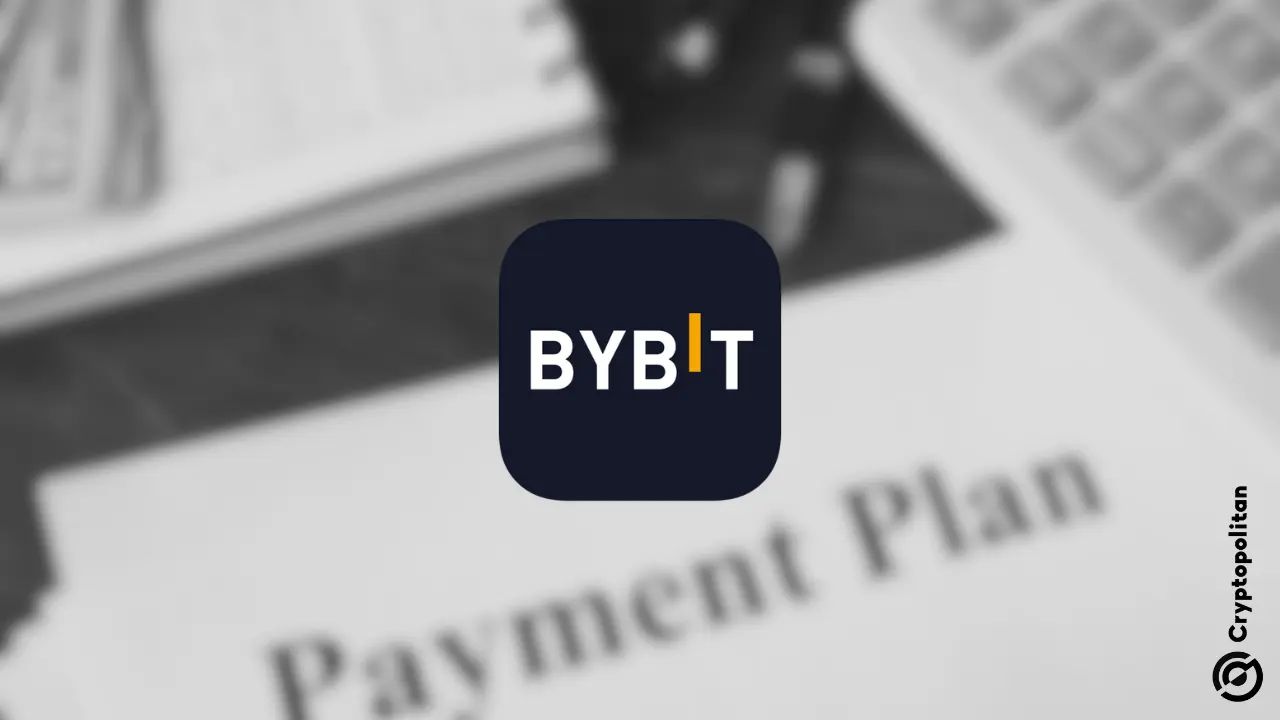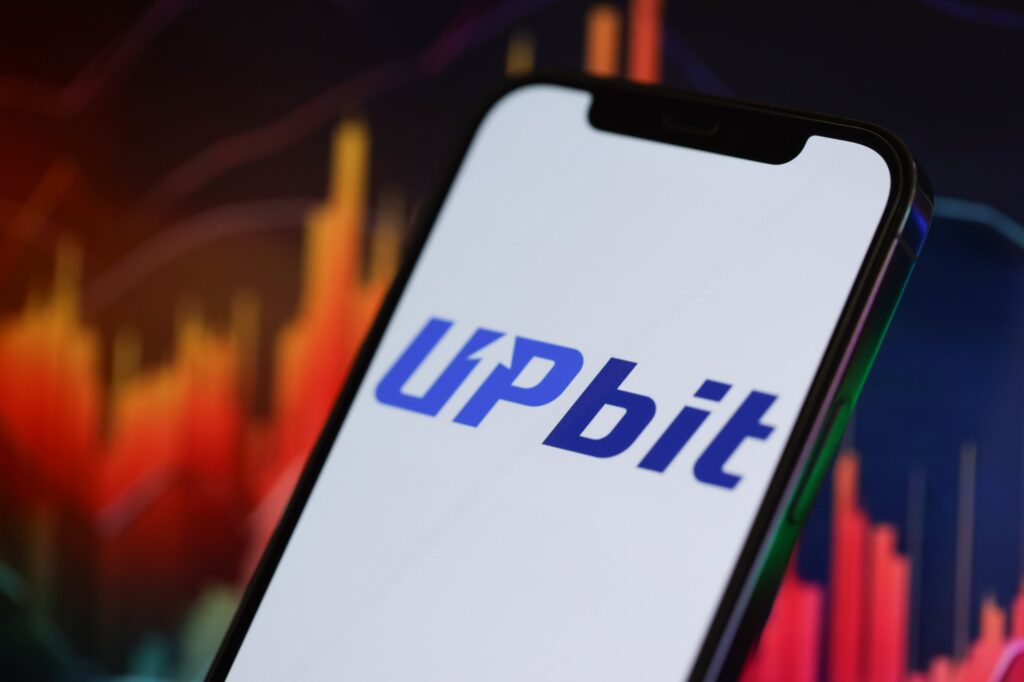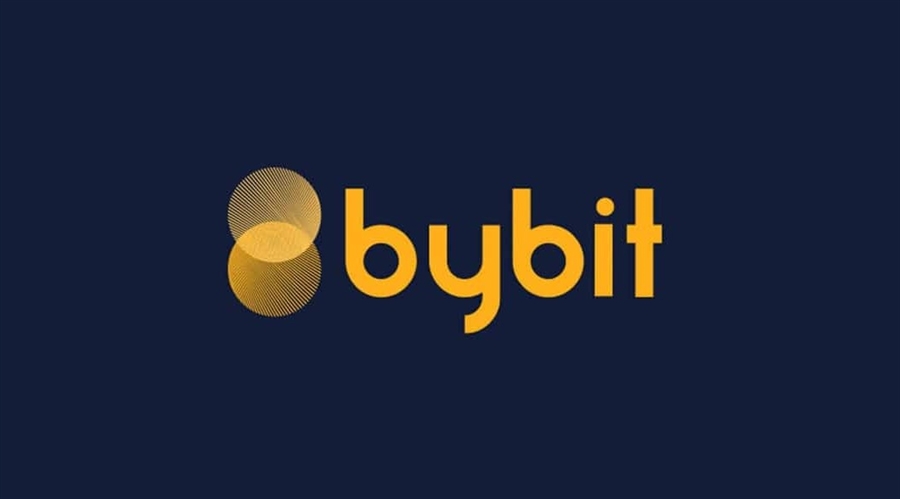When it comes to choosing a cryptocurrency exchange, traders and investors are often faced with a multitude of options. Among the most prominent platforms in the industry are Upbit vs Bybit—two leading exchanges known for their unique features, user experiences, and targeted user bases. This detailed comparison aims to dissect every aspect of these two giants, helping you make an informed decision suited to your trading style and needs.
In this article, we will delve into various attributes such as trading features, user experience, security measures, fee structures, supported cryptocurrencies, customer support, mobile app performance, liquidity, and ultimately, which platform might be the best choice for you. Whether you’re a beginner or an experienced trader, understanding the nuances between Upbit and Bybit can significantly influence your trading success and safety.
Upbit vs Bybit: A Comprehensive Comparison

The landscape of cryptocurrency exchanges is diverse, with each platform bringing its own set of tools, philosophies, and target audiences. Upbit and Bybit exemplify this diversity—each appealing to different types of traders with distinct priorities.
While Upbit primarily appeals to users interested in spot trading with a wide array of cryptocurrencies and a user-friendly interface, Bybit is renowned for its derivatives trading, offering leverage and advanced trading options. To truly understand their strengths and weaknesses, we need to explore various facets of each platform in detail.
Before jumping into specific features, it’s essential to recognize that your choice between Upbit and Bybit depends on what you prioritize: whether it’s security, liquidity, trading flexibility, or customer service. Let’s start by examining their core trading features.
Trading Features: Upbit vs Bybit

Trading functionalities form the backbone of any cryptocurrency exchange. They determine how effectively you can execute trades, manage risk, and optimize profits. Understanding the differences in trading features between Upbit and Bybit helps traders align their strategies with the platforms’ capabilities.
Range of Trading Options
Upbit offers a comprehensive spot trading platform where users can buy, sell, and trade a vast array of cryptocurrencies against fiat currencies or other digital assets. It supports standard market orders, limit orders, and stop-loss orders, providing a well-rounded trading environment suitable for both novices and seasoned traders. Upbit’s emphasis on spot trading makes it ideal for users who prefer direct ownership of cryptocurrencies without leverage or derivatives.
Bybit, on the other hand, has carved out a niche in derivatives trading, especially perpetual contracts and futures. Its platform allows traders to leverage positions up to 100x on select trading pairs, enabling amplified gains (and risks). The inclusion of margin trading, options, and advanced order types, such as conditional and OCO orders, caters to professional traders looking to implement complex trading strategies.
Trading Tools and Technical Analysis
Upbit provides essential charting tools integrated within its platform, including candlestick charts, volume indicators, and basic technical analysis tools. While sufficient for most casual traders, it lacks some of the more advanced features found in dedicated trading software. The platform prioritizes ease of use and speed over deep analytical tools, which aligns with its primary audience.
Bybit boasts powerful charting capabilities, often integrating with popular third-party tools like TradingView. This integration offers a suite of technical indicators, drawing tools, and customizable layouts. For traders who rely heavily on technical analysis, Bybit’s platform provides a more sophisticated environment to develop and execute strategies.
Leverage and Risk Management
Leverage is a defining differentiator between Upbit and Bybit. Upbit does not offer leveraged trading; it focuses purely on spot transactions. This makes it safer for beginners concerned about margin calls and liquidation risks.
Bybit excels here, offering high leverage options that appeal to aggressive traders willing to take on substantial risk for higher rewards. It also provides risk management tools such as automatic liquidation, stop-loss orders, and position size limits that help mitigate potential losses—a crucial feature given the volatile nature of leveraged trading.
Trading Speed and Execution
Execution speed can determine profitability, especially in fast-moving markets. Upbit is known for swift order execution due to its robust infrastructure, making it suitable for day traders and scalpers focusing on quick entries and exits in spot trading.
Bybit’s system is optimized for high-frequency trading and rapid order execution, particularly important when dealing with derivatives and leveraging positions. The platform’s infrastructure reduces latency, ensuring traders can respond swiftly to market movements.
In essence, your choice of trading features hinges upon your trading style. If you prefer straightforward buying and selling with minimal risk, Upbit’s platform suits you. Conversely, if you’re an experienced trader seeking leverage, derivatives, and advanced tools, Bybit offers a compelling environment to deploy those strategies.
User Experience on Upbit vs Bybit

User experience encompasses the ease of navigation, platform design, accessibility, and overall usability. A seamless interface not only enhances trading efficiency but also minimizes errors, especially during volatile periods.
Interface Design and Layout
Upbit employs a clean, modern interface emphasizing simplicity and user-friendliness. The layout arranges key information such as price charts, order books, and recent trades intuitively, making it accessible even for newcomers. The design avoids clutter, allowing users to focus on core trading activities without distraction.
Bybit offers a more complex interface tailored to active traders. Its layout provides extensive customization options, multiple chart windows, and a plethora of analytical tools at the user’s fingertips. While this richness benefits experienced traders, beginners may find the interface overwhelming initially.
Ease of Navigation
Navigating Upbit feels natural thanks to its straightforward menu structure. Users can quickly access different sections—markets, wallet, deposits, and account settings—with minimal clicks. The onboarding process is smooth, aided by comprehensive tutorials and FAQs.
Bybit’s platform is designed for rapid trading, with shortcuts and hotkeys that seasoned traders can leverage. However, this complexity might pose a learning curve for new users. The platform’s multi-layered menus and advanced features require time to master.
Customization and Personalization
Upbit offers limited customization options, focusing on providing a consistent experience across devices. It suits users who prefer a uniform interface that works equally well on desktop and mobile.
Bybit excels in customization, letting traders set up multiple chart views, adjust display settings, and organize trading panels according to personal preferences. These options empower professional traders to optimize their workspace for efficiency.
Overall Responsiveness and Stability
Both platforms demonstrate high responsiveness, with minimal lag during normal trading conditions. During high volatility, Upbit maintains stability, ensuring traders can execute orders without significant delays.
Bybit invests heavily in infrastructure to handle large trading volumes, maintaining stability even during market surges. Its platform architecture reduces downtime and ensures traders can perform critical actions without disruptions.
A positive user experience depends significantly on platform design aligning with user expectations and trading styles. Upbit’s simplicity appeals to newcomers prioritizing ease, while Bybit’s advanced interface attracts professional traders who value depth and customization.
Security Measures: Upbit vs Bybit

Security remains paramount in cryptocurrency trading, where assets are often targets for malicious attacks. Both Upbit and Bybit employ rigorous security protocols, but their approaches and implementations vary.
Security Protocols and Infrastructure
Upbit utilizes industry-standard security practices, including cold storage for the majority of funds, multi-signature wallets, and encrypted communications. It also implements regular security audits and updates to address emerging threats.
Bybit adopts similar measures, emphasizing cold storage, multi-factor authentication (MFA), and anti-phishing protections. Its platform undergoes continuous security assessments, and it maintains transparency reports outlining its security posture.
Authentication and Access Controls
Upbit encourages strong password practices and enables MFA. It also offers biometric login options on compatible mobile devices, enhancing security without compromising convenience.
Bybit makes MFA mandatory for withdrawals and sensitive account changes. Its biometric authentication options further bolster security, especially on mobile devices.
Insurance and Fund Safety
Upbit maintains a reserve policy to cover potential security breaches, although specific details regarding insurance coverage are less publicly detailed. The platform prioritizes cold storage for the majority of user funds, minimizing exposure to online threats.
Bybit claims to employ comprehensive risk management procedures, and while it doesn’t explicitly advertise insurance policies, it emphasizes secure custody practices and rigorous internal controls.
Incident Response and Transparency
Both platforms have experienced security incidents in the past but responded promptly to mitigate damages. Upbit maintains transparency through public disclosures and security updates, fostering user trust.
Bybit publishes security advisories and participates in community-led initiatives to enhance collective security awareness.
In summary, both Upbit and Bybit prioritize security, employing multi-layered defenses. Your confidence in their protection mechanisms depends on your risk tolerance and the platform’s adherence to best practices. For peace of mind, always enable multi-factor authentication and follow recommended security protocols.
Fees and Costs: Upbit vs Bybit Explained

Understanding fee structures is vital for effective trading strategy formulation. Different platforms adopt varying models, influencing overall profitability.
Trading Fees and Commissions
| Platform | Spot Trading Fee | Derivatives Trading Fee | Deposit Fee | Withdrawal Fee |
|---|---|---|---|---|
| Upbit | 0.10% (maker/taker) | N/A | Free for most fiat/crypto | Varies by asset |
| Bybit | 0.025% (maker), 0.075% (taker) | 0.025% (perpetual contracts) | Usually free | Varies by crypto |
Upbit charges a flat 0.10% fee for both maker and taker orders, making it predictable and straightforward. Their fee structure favors frequent traders who execute many small trades. Deposits are generally free, but withdrawals incur network fees, depending on the blockchain.
Bybit offers ultra-competitive trading fees, especially for makers, promoting liquidity provision. Its derivative trading fees are slightly higher but offset by the ability to leverage positions, potentially increasing returns. Deposit fees are minimal or waived, while withdrawal fees depend on the specific cryptocurrency.
Fee Structures for Different Users
Active traders engaging in high-volume trading benefit from tiered fee reductions, which both platforms support through loyalty programs or VIP levels.
Upbit offers discounts based on trading volume and holds a straightforward fee model. The absence of leverage trading means traders pay only for executing spot orders, simplifying cost calculations.
Bybit’s fee discounts incentivize high-frequency traders, and its rebate programs reward market makers. The platform’s leverage options mean that traders should consider funding costs as part of their overall expenses.
Hidden or Additional Costs
While base fees are transparent, traders should consider potential hidden costs, such as withdrawal network fees or conversion fees when trading across different currencies. Both platforms charge network fees for blockchain transactions, which vary depending on network congestion and the specific coin.
Comparing Total Costs Effectively
For a comprehensive view, traders can analyze the total cost of a typical trade, including trading fees, deposit/withdrawal costs, and slippage. Such analysis reveals that while Upbit might be more cost-effective for spot trading, Bybit could be cheaper or more expensive depending on trading volume, leverage use, and transaction frequency.
Efficient cost management requires understanding these fee structures deeply. Choosing a platform that aligns with your trading volume, style, and asset preferences can significantly impact your earnings over time.
Supported Cryptocurrencies: Upbit vs Bybit
The variety and selection of supported cryptocurrencies directly influence trading opportunities and diversification strategies.
Number and Variety of Assets
Upbit offers a broad spectrum of cryptocurrencies, often emphasizing the latest altcoins, regional tokens, and fiat-to-crypto options, especially within South Korea and Asia. Its selection includes major coins like Bitcoin, Ethereum, Ripple, and numerous smaller or emerging tokens.
Bybit primarily focuses on top-tier cryptocurrencies for derivatives trading, including Bitcoin, Ethereum, Ripple, Litecoin, and Chainlink. While it supports fewer coins for spot trading, it excels in offering highly liquid trading pairs for derivatives.
Range of Altcoins and Emerging Tokens
Upbit tends to list a wider range of altcoins, appealing to traders seeking exposure to lesser-known projects. Its listings often reflect regional demand and innovative tokens, making it attractive for portfolio diversification.
Bybit lists primarily high-market-cap assets, with occasional additions of trending tokens. Its emphasis is on liquidity and stability, favoring established coins rather than niche tokens.
Fiat Support and Regional Accessibility
Upbit integrates fiat gateways, primarily in South Korea, supporting KRW deposits and withdrawals. It also supports USD and other regional currencies, making it accessible to international users.
Bybit is predominantly a crypto-to-crypto platform without direct fiat integrations in most regions. Users usually deposit via cryptocurrencies, adding an extra step but maintaining broader accessibility to global traders.
Impact on Trading Strategies
The extensive coin support on Upbit allows traders to explore diverse markets, execute arbitrage, or invest in emerging projects early. Conversely, Bybit’s focus on major assets and derivatives offers a robust environment for sophisticated trading strategies involving leverage and hedging.
Overall, Upbit vs Bybit differ considerably in their supported assets, with Upbit favoring broader diversity and regional fiat support, while Bybit prioritizes liquidity and stability in major cryptocurrencies and derivatives.
Customer Support: Upbit vs Bybit
Quality customer support can greatly influence your trading experience, especially when issues arise unexpectedly.
Support Channels and Accessibility
Upbit offers support via email, live chat, and an extensive FAQ section covering common questions and troubleshooting steps. Its multilingual support, especially in Korean and English, accommodates a diverse user base. The platform also provides educational resources for beginners.
Bybit emphasizes rapid response via 24/7 live chat, email, and an extensive help center. Its community engagement and proactive communication through social media channels foster transparency and trust. The support team is experienced in handling complex technical issues related to derivatives trading.
Response Time and Issue Resolution
Upbit generally responds within a few hours to inquiries, with resolution times depending on the issue’s complexity. Its support staff is well-trained to handle general account issues, deposits, withdrawals, and platform bugs.
Bybit prides itself on quick responses, often resolving common issues within minutes, especially via live chat. Its technical support handles troubleshooting of API integrations, margin calls, and platform outages efficiently.
User Feedback and Satisfaction
Feedback indicates that Upbit users appreciate its professionalism, clear communication, and comprehensive self-help resources. Some report delays during high traffic periods, but overall satisfaction remains high.
Bybit users praise the platform’s proactive support, especially in urgent scenarios like liquidation or security concerns. Occasionally, users express frustration over language barriers or response inconsistencies, but these are relatively rare.
Additional Support Features
Both platforms host webinars, tutorials, and community forums to educate users. Bybit’s frequent updates and announcements serve as valuable resources for traders to stay informed.
Effective customer support is crucial for a positive trading environment. Upbit and Bybit both deliver reliable support services, with Bybit’s real-time assistance giving it an edge for active traders needing immediate resolutions.
Mobile App Performance: Upbit vs Bybit
With trading increasingly shifting to mobile devices, app performance becomes a key consideration for traders on the go.
App Design and User Interface
Upbit’s mobile app features a sleek, intuitive design emphasizing simplicity. Navigation mirrors the desktop version, allowing easy access to markets, wallet, and transaction history. The interface’s clarity supports quick decision-making even under pressure.
Bybit’s app offers a more detailed interface tailored for traders comfortable with complex data. Multiple charting tools, order types, and real-time notifications are integrated seamlessly, providing a near-desktop experience on mobile.
Performance and Reliability
Both apps are optimized for stability and speed. Upbit ensures minimal lag and prompt synchronization across devices, maintaining high responsiveness during high volatility.
Bybit has invested heavily in optimizing its app infrastructure, which performs reliably under heavy loads. Its push notifications and real-time data feeds keep traders informed instantly.
Features and Functionalities
Upbit’s mobile app supports all core functions: spot trading, deposits, withdrawals, and account management. However, advanced features like margin trading are limited or absent.
Bybit’s app enables margin trading, accessing derivatives markets, and managing leveraged positions directly from mobile, offering a comprehensive trading experience.
Security on Mobile Devices
Both apps incorporate security features such as biometric login, MFA, and session management. Users are advised to enable these features to protect accounts on mobile devices.
In conclusion, both Upbit and Bybit provide robust mobile applications tailored to different trading needs. Upbit’s app simplifies trading for casual users, while Bybit’s app empowers professional traders with advanced tools on mobile.
Liquidity Analysis: Upbit vs Bybit
Liquidity impacts the ability to execute large trades without significant slippage and directly affects trading efficiency.
Market Depth and Order Book Size
Upbit generally exhibits high liquidity for major cryptocurrencies like Bitcoin and Ethereum, especially within the Asian markets. Its order books are deep enough for retail traders but might face limitations with very large orders.
Bybit offers exceptional liquidity in derivatives markets, often matching or surpassing competitors in popular trading pairs. Its high open interest and trading volume facilitate smooth execution of large positions with minimal slippage.
Trading Volume and Exchange Rank
According to various industry rankings, Bybit frequently ranks among the top platforms globally in derivatives trading volume, indicating strong liquidity.
Upbit remains dominant within South Korea and Asia, with substantial spot trading volumes for local and regional tokens. Its global position varies but maintains high activity levels for key cryptocurrencies.
Impact on Trading Strategies
High liquidity reduces the risk of slippage, enabling precise entry and exit points. For traders executing large orders or employing high-frequency strategies, Bybit’s liquidity makes it a favorable platform.
Upbit’s liquidity suffices for most retail traders but might pose challenges for significant institutional trades in less popular assets.
Liquidity Table
| Aspect | Upbit | Bybit |
|---|---|---|
| Major crypto liquidity | High | Very high |
| Derivative market liquidity | Moderate | Exceptional |
| Deep order books | Yes | Yes |
| Slippage during large trades | Minimal for majors | Almost negligible |
Liquidity remains a critical factor, and Bybit’s competitive edge in derivatives markets makes it ideal for traders requiring high liquidity for complex strategies. Upbit’s liquidity is robust for spot trading, especially in popular cryptocurrencies.
Conclusion: Choosing Between Upbit and Bybit
Deciding between Upbit vs Bybit ultimately depends on your trading objectives, experience level, and risk appetite. Upbit stands out as a user-friendly platform suitable for beginners and those focused on spot trading with a broad range of cryptocurrencies, regional fiat support, and strong security measures. Its simple interface, comprehensive asset support, and reliable performance make it an excellent choice for casual and retail traders.
On the other hand, Bybit caters to professional traders seeking advanced trading tools, high leverage, and deep liquidity in derivatives markets. Its sophisticated interface, rapid execution, and extensive charting capabilities empower experienced traders to deploy complex strategies. However, the higher risk associated with leveraged trading necessitates careful risk management.
Both platforms excel in security and customer support, though their focus areas differ. Upbit’s emphasis on safety, simplicity, and regional integration contrasts with Bybit’s focus on innovation, speed, and derivatives trading.
Ultimately, your choice hinges on your trading style: if you prefer straightforward spot trading with a focus on asset diversity and regional compliance, Upbit is likely your best fit. Conversely, if you’re an advanced trader interested in leverage, derivatives, and high liquidity, Bybit offers a compelling platform. Evaluating your goals carefully will ensure you select the platform that best aligns with your trading journey.

Sandali Handagama is CoinDesk’s deputy managing editor for policy and regulations, EMEA. She is an alumna of Columbia University’s graduate school of journalism and has contributed to a variety of publications including The Guardian, Bloomberg, The Nation and Popular Science.